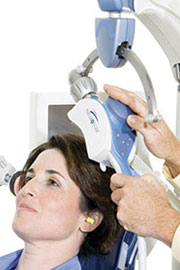Hereditary Neurological Conditions
Although hereditary neurological conditions are some of the most difficult medical conditions to treat, a recent study seems to indicate the existence of a gene that may provide a hint of promise for the future. While stopping short of announcing a cure, the discovery of this gene does represent a significant step forward in the fight against such diseases.
Cure for an incurable disease?
Like many other hereditary neurological conditions, spastic paraplegia currently has no cure. However, the recent discovery of previously undiscovered gene may indicate a potentially effective treatment for the rare disease. And for patients suffering from hereditary neurological conditions, this may promise hope for the future.
The study in question was conducted by researchers at Duke University Medical Center. The results seem to suggest the very real possibility of the development of drugs that focus on the defective gene.
The gene in question has actually undergone mutation, and this defect has been linked to as many as 7% of all hereditary spastic paraplegia cases. It is thought that the discovery of this gene defect is a significant step forward in the path to finding a cure for hereditary neurological conditions, as well as non-hereditary neurological conditions. Among the diseases that may be treated with the hypothetical medication is amyotrophic lateral sclerosis or Lou Gehrig's disease.
A potential treatment option
At present, patients suffering from hereditary neurological conditions do not have any real options for treatment of the disease. With this new discovery, researchers anticipate new opportunities to study the issue from a different perspective. This in turn may lead to a better understanding of the disease, and hopefully, the determination of their causes, as well as the essential genes to focus on.
A look at hereditary spastic paraplegia
Hereditary spastic paraplegia is only one of several hereditary neurological conditions. In its most common form, it may cause a number of symptoms including:
- Weakness in the limbs
- Stiffness
- Eventual paralysis
Like many other hereditary neurological conditions, people who suffer from hereditary spastic paraplegia are diagnosed with the condition from the ages of 25 to 55 year old. The disease actually causes a number of debilitative effects, many of which appear suddenly, and grow progressively worse over time. Since there is no cure presently available for these as well as may other types of hereditary neurological conditions, treatment methods often focus on managing the symptoms of the disease and reducing its effects rather than actually treating the condition. Most treatment therapies therefore involve improving muscle strength and preserving the patient's range of movement.
Details of the research
In the course of the study of hereditary spastic paraplegia, researchers found a link between the condition and a gene that has since been named REEP1. In a person that does not have hereditary neurological conditions, this gene is responsible for producing proteins that serve as the energy source of the cells. However, a defect on the gene causes the impaired function of these proteins. That being said,, the specific cause of this protein malfunction is, as yet, a scientific mystery.

